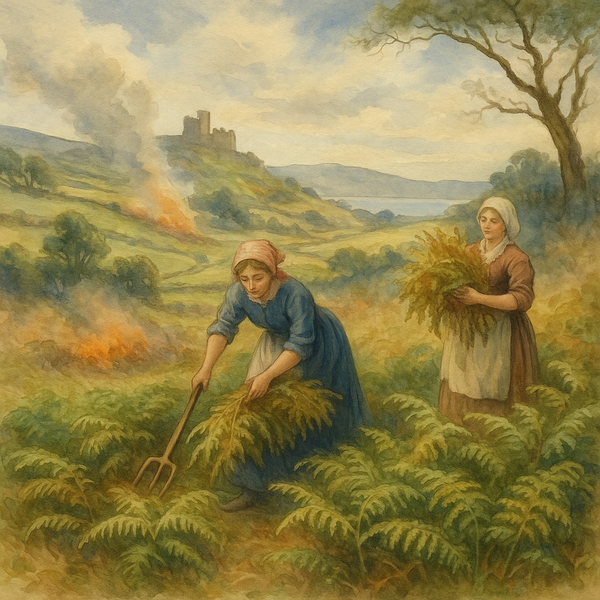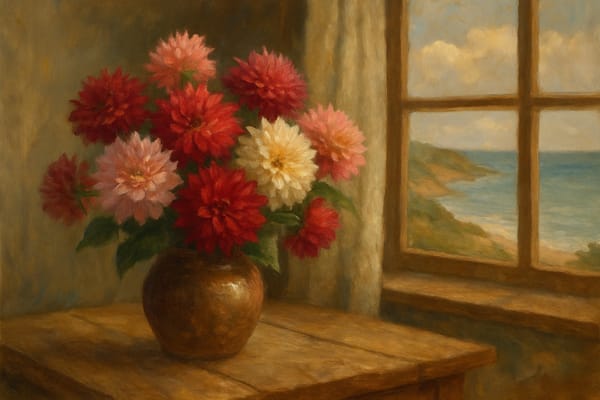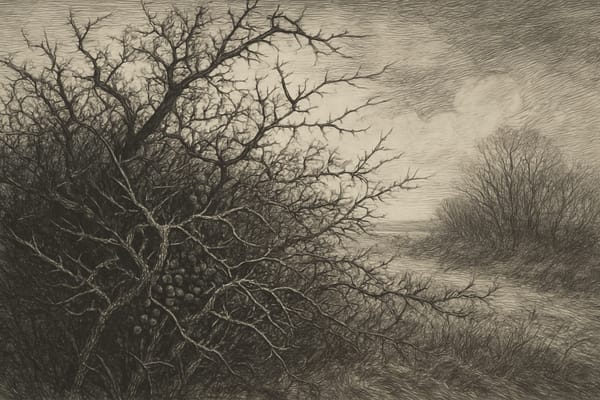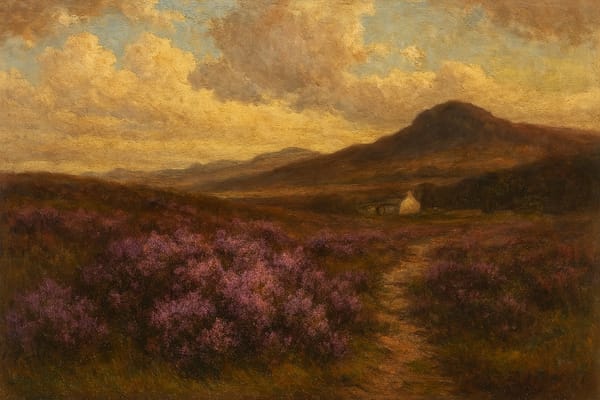Across Cornwall’s wild hillsides and shadowed woodlands, the sweeping fronds of bracken (Pteridium aquilinum) rise like nature’s silent sentinels. More than a common fern, bracken holds a unique place in Cornish folklore — a living emblem of protection, boundary, and unseen magic that straddles the line between the practical and the supernatural.
The Threshold Plant: Keeper of the Boundary
Bracken thrives where the cultivated meets the wild — along moorland edges, woodland margins, and untamed field boundaries. In Cornish lore, this natural positioning granted it symbolic power as a guardian of thresholds. Where bracken grew thick, it marked the edge of human influence and the beginning of the faerie-haunted unknown.
Wandering into bracken thickets was believed to bring you closer to the Otherworld — a realm of spirits, faeries, and hidden forces. Crossing through these dense stands without respect risked misfortune, disorientation, or even supernatural encounter.
Nature’s Mystery: The Magic of Invisibility
Unlike flowering plants, bracken spreads through unseen spores — an invisible reproductive dance that sparked wonder and fear in equal measure. In Cornwall’s midsummer legends, these spores took on mystical qualities.
On St. John’s Eve (Midsummer’s Night), it was said that bracken spores became fleetingly visible. Those bold or fortunate enough to collect them at that precise moment could claim the gift of invisibility — a power lasting until dawn. Whether used to escape danger, move unseen, or cross unnoticed into faerie lands, this gift blurred the line between folklore and the whispered hopes of the daring.
Protective Powers in Home and Ritual
Bracken’s protective role wasn’t limited to myth. In everyday Cornish life, its fronds were gathered for practical use — thatching roofs, bedding livestock, insulating crops. Yet even these mundane uses carried a weight of unseen power.
Thatching with bracken was thought to shield homes from lightning strikes and malevolent witches. Burning its stems created ash used in soapmaking and farming — but also believed to drive away bad luck and purify the land. Bracken’s boundary-defining role extended to its use in rituals, often burned at seasonal gatherings to cleanse, protect, and reset the energies of home and hearth.
Signs, Symbols, and Omens
Cutting a bracken stem at the right spot could reveal mysterious symbols: crosses, letters, even ominous signs like the “devil’s foot.” These hidden patterns were read as omens — a blessing of protection, a warning of danger, or even a glimpse into one’s future.
Such readings became woven into folk practices of fortune-telling and divination, heightening bracken’s reputation as a plant that revealed what lay beneath the surface.
Bracken’s Enduring Legacy in Cornish Landscape
Today, bracken remains both loved and managed — a symbol of Cornwall’s wild places and a challenge for conservationists. But its folklore lives on, shaping community attitudes and cultural connection to the land. From midsummer rituals to its use in storytelling walks, bracken continues to act as a living link between Cornwall’s people, their environment, and the enduring mysteries of the unseen world.











